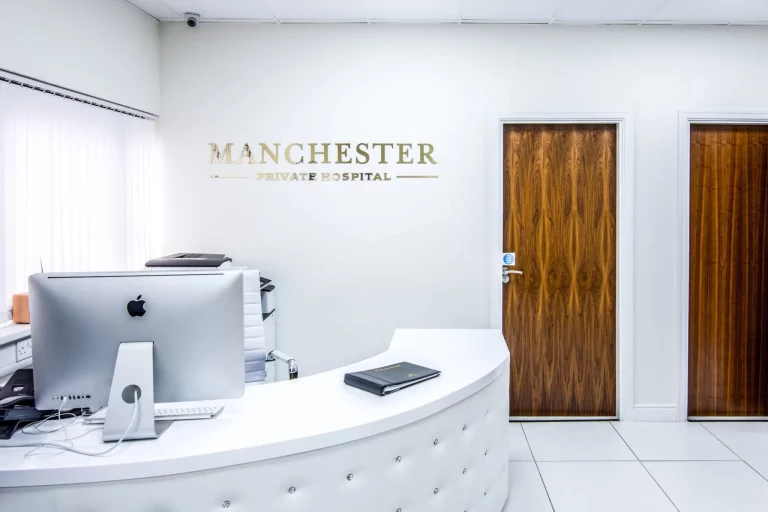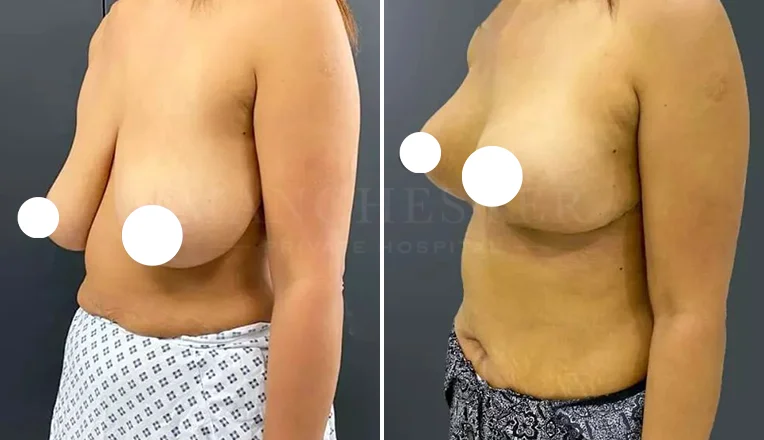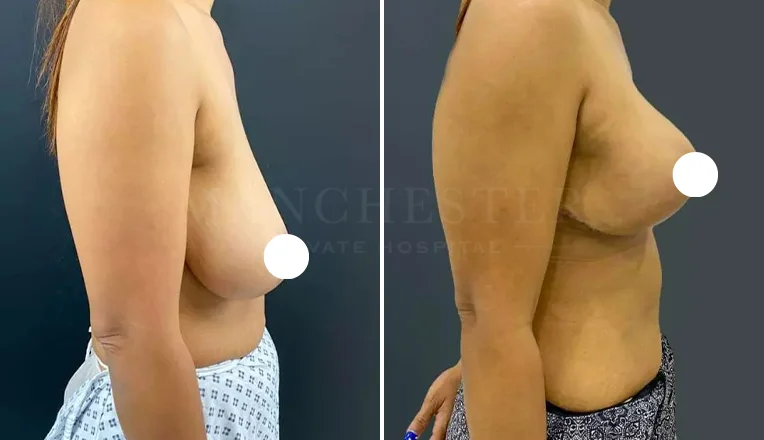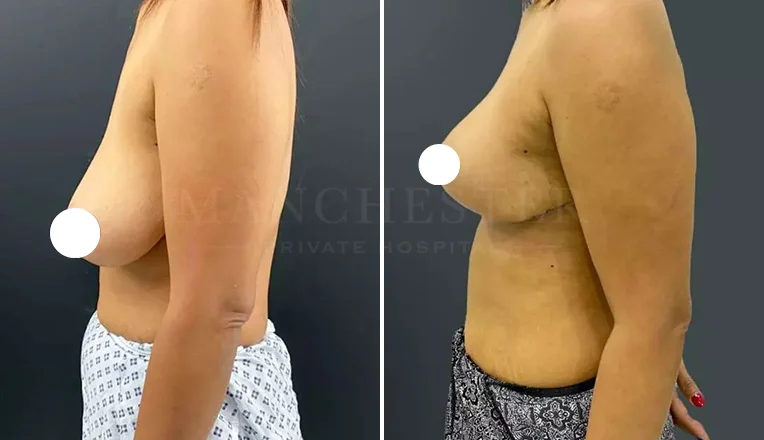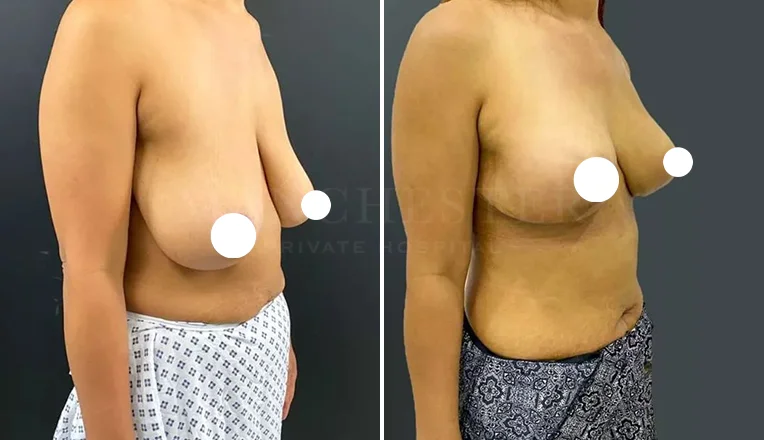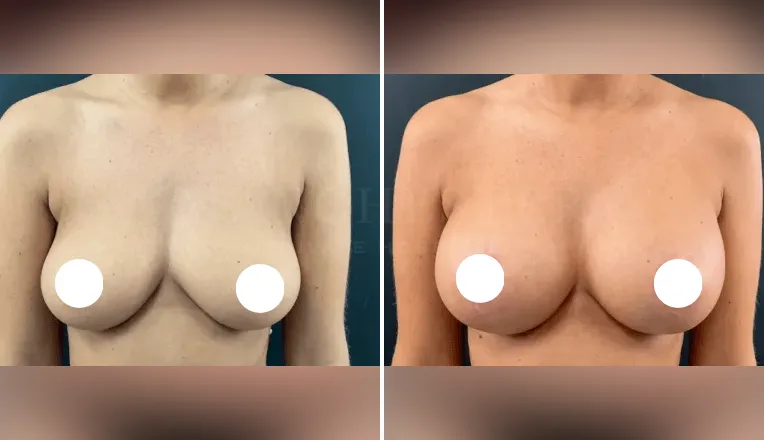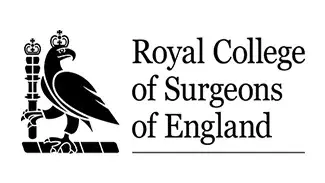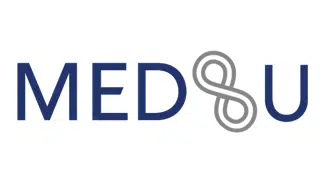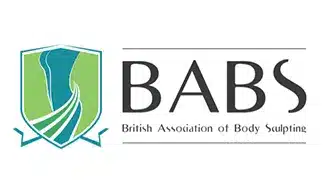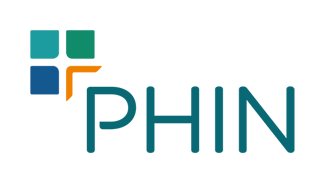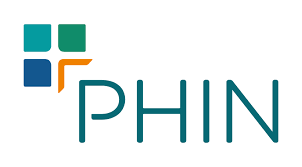Surgery Time 2 Hours
Results Seen 3 Months
Back To Work 1-2 Weeks
Pain Level Moderate
Hospital Stay Day Case
Cost From £7990*
Breast Uplift Before And After Gallery
GMC Registered Surgeons
7100+ Happy Patients
Flexible Finance Options
CQC Registered Private Hospital
What Is Mastopexy?
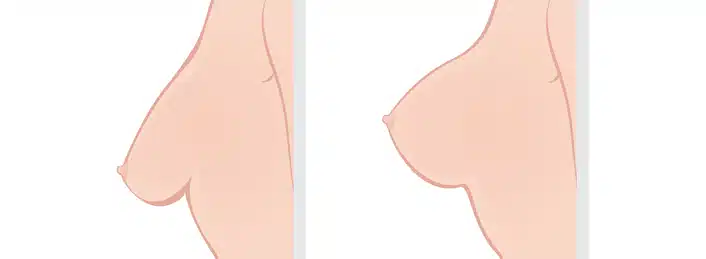
Mastopexy, also known as a breast uplift, is a cosmetic surgery procedure designed to change and raise (lift) the breasts of a woman.
The surgery can involve changing the contour, elevation and size of the breasts for females who are unhappy with how they hang or sag.
Breast uplift procedures’ aim is to bring about a more aesthetically pleasing bust that is in proportion to their upper body so that they are correctly placed on the chest.
Various events in life can alter the way the breasts look and behave, including ageing, weight loss and having children.
The muscles and ligaments around the breasts can stretch and break down, causing the breasts to lose their youthful appearance and droop.
This, combined with natural gravity, can pull the breasts down causing permanent drooping or hanging boobs.
During a breast uplift, your surgeon may also remove excess skin and reshape breast tissue to raise the breasts up.
In addition, it is not uncommon to combine other surgical procedures with mastopexy such as augmentation (implants). Mastoplexy can also be applied during a breast reduction procedure to correct breasts that are oversized.
Rediscover firmer, more uplifted breasts with a personalised breast lift procedure in Manchester at Manchester Private Hospital. Our expert team combines artistry and surgical precision to help you achieve natural-looking, long-lasting results.
Who Is the Ideal Candidate?
If you’re bothered by a sagging breast contour—whether from pregnancy, weight fluctuations, or ageing—a boob lift can restore a perkier profile. Good candidates for mastopexy typically:
- Have stable weight and overall good health
- Notice nipples sitting below the breast crease
- Desire firmer, more youthful breasts without implants
- Understand realistic outcomes and embrace aftercare guidance
For those seeking both lift and volume, an augmentation mastopexy (lift plus implants) may be the optimal choice.
Why Choose Breast Uplift?
As we age, the boobs droop or sag naturally, especially after life events such as being pregnant, breastfeeding or losing weight.
These events can cause strain on the ligaments and surrounding tissue so that the breasts are no longer supported as they once were.
Whilst the support tissue itself cannot be recreated, the breasts can be reshaped and uplifted in to a new position along with removing excess loose skin.
There are a number of different reasons, (sometimes multiple reasons together), why women choose Mastopexy surgery. These include:
- Gravity / Ageing
- Pregnancy / Breastfeeding
- Weight gain / weight loss
These factors can cause minor to dramatic changes in breast firmness, shape and elasticity.
A breast uplift procedure can help breasts feel more firm, reshape the tissue and restore elasticity by removing overstretched ligaments and skin.
The nipples can also be moved to the best position as advised by your surgeon to fit the new shape and position of the breast along with reducing the areola size if necessary.
If you are unhappy with the way your breasts look and feel, arranging a consultation with a specialist will help you make an informed decision on whether surgery is right for you.
Patients consider this common cosmetic procedure for all kinds of reasons, such as:
- Their breasts droop
- Their breasts have lost shape / volume
- Their breasts appear flat and longer as they hang
- Their nipples / areola point down towards the floor
- Their breasts do not hang evenly and one breast sags more than the other
Whilst not everyone is the right candidate for mastopexy, it is a common and often straight forward procedure that is performed on patients of all different ages.
However, younger patients are often advised to delay mastopexy procedures if they are considering motherhood in the future as pregnancy / nursing are big culprits in changing the way the breasts look, feel and hang. Therefore, any corrective results from such surgery could be undone naturally during the process of childbirth.
It is also worth noting that breast uplift surgery can affect milk production for mothers who are considering breast feeding.
About Mastopexy
Mastopexy, whilst a common cosmetic procedure, is not something that everyone can undergo.
It is also a procedure that some patients find misleading and often mistake it for other procedures such as augmentation.
Before considering a breast uplift, it is important to arrange a consultation with a specialist to discuss what it is you want from your surgery and the results you want to achieve.
Your surgeon will be able to talk about the procedure in depth and see whether you are an ideal candidate for mastopexy.
You will also be asked about medical conditions, history and undergo a full examination of your breasts to see that the procedure is not only right for you, but to discuss an individual, personal plan that will suit your breasts’ size, shape and desired results.
Photographs may also be taken for your medical records, which you are welcome to view during the discussion and talk about any other procedures that may be beneficial in combination with an uplift, such as breast enlargement.
With mastopexy, there is no one procedure fits all. Patients are examined based on their individual needs and size of breasts.
The most common method of uplift is an incision around the areola and incision under the breast itself. Often a surgeon will make an incision in the crease of the boob and remove any excess skin from underneath. After this, the breast can then be reshaped so that it is tighter and nipples can be moved to a higher position.
If you want larger breasts or for them to feel more full, it is important that you do not mistake augmentation for mastopexy and an uplift alone will not achieve this. That is why many patients undergo multiple procedures at the same time so that their boobs are lifted up and enhanced to a firmer and larger appearance / feel.
Types of Lift Techniques
At MPH, we tailor your breast uplift to match the degree of ptosis (droop):
- Crescent Mastopexy: A small crescent-shaped incision above the areola for mild lift.
- Peri-Areolar (Donut) Lift: Circular incision around the areola—ideal for moderate lifts and subtle areola resizing.
- Vertical (Lollipop) Mastopexy Lift: Incision around the areola and down the breast for moderate to significant reshaping.
- Anchor (Inverted-T) Lift: Combines the lollipop scar with a horizontal crease incision—best for severe sagging.
Each technique minimises breast lift scars by following natural skin lines and using meticulous closure methods.
Advantages Of Breast Uplift
There are many advantages to breast uplift procedures for those that are an ideal candidate.
Lifting the breasts can sometimes help:
- Make boobs / body look more youthful
- Reduce sagging
- Boost self confidence
- Improve overall body appearance
- Regain body confidence after pregnancy
- Make boobs look more symmetrical
- Alter the way your nipples look
- Give confidence to wear different items of clothing, such as swimwear
It is important to be honest with your surgeon during a consultation and discuss every aspect of why you wish to undergo mastopexy in order to receive the best advice possible and to ensure that your goals are realistic.
Breast Uplift Surgery Scars
Every breast uplift surgery—often called a mastopexy—requires incisions to reshape and lift the breast tissue, so scarring is an inevitable part of the process. However, with modern techniques and expert aftercare, most scars become fine lines that blend into your natural breast contours over time.
1. Common Scar Patterns
- Peri‐areolar scar: a circular scar around the edge of the areola; often used in mild lifts.
- Lollipop scar: a circle around the areola plus a vertical line down to the breast crease, for moderate reshaping.
- Anchor scar: combines the lollipop pattern with an additional horizontal scar under the breast fold, ideal for more significant sagging.
2. Scar Healing Timeline
- First 3 months: redness and slight firmness—normal as tissues remodel.
- 6–12 months: scars soften and fade; you’ll notice most improvement by the one‐year mark. Many patients report barely visible breast lift scars after one year.
3. Minimising and Managing Scarring
- Silicone sheeting or gels: Regular application can flatten and lighten scars.
- Scar massage: Gentle circular motions improve blood flow and flexibility.
- Sun protection: UV exposure can darken scars, so apply SPF over incision sites.
4. Scar Revision Options
For those unhappy with persistent breast uplift scars, scar of breast lift revision techniques can refine appearance.
Our surgeons at Manchester Private Hospital use precise suturing and incision placement to ensure your breast lift scarring is as discreet as possible—helping you enjoy your perkier, lifted shape with confidence.
Learn more about scar patterns, healing timelines, and care tips in our detailed guide on Mastopexy Scars: Types, Healing & Expectations.
Recovery & Aftercare
Following a mastopexy procedure, patients usually stay in hospital for one to two days for recovery and observation.
Patients will need to arrange to be driven home when leaving the hospital and to be accompanied at home for at least the first 24 hours.
If you undergo breast uplift surgery, you will expect boobs to be swollen and may be discoloured along with incisions looking prominent. These wounds will heal and fade over the coming months up to 2 years.
Whilst immediate results won’t fully reflect desired goal, you will start to see proper results and improvements over the first four to six months post surgery.
Patients are advised to take it easy for the first 6 weeks and not lift anything heavy or do strenuous activity.
As each procedure varies from patient to patient, activity levels and returning to work will be discussed with you during your consultation and again in your aftercare plan.
Most patients can return to light exercise activities after 8 weeks and return to work after 10-14 days.
Generally, immediate recovery from mastopexy takes up to 6 weeks and results should be properly visible from between 6 and 9 months.
Here is what you can expect post surgery:
- Week 1 – Some pain and discomfort, which can be managed with painkillers. Activity levels should be very light, such as walking, but not to stay idle or rest too long. A support bra / sports bra will need to be worn for around 2-3 weeks both day and night.
- Week 2 – When moving, you may feel a pulling feeling and some pain. Stitches will be removed and activity levels can be increased gradually. You can return to work after 2 weeks depending on your job and rol
- Weeks 3-6 – Lifting heavy objects is to be avoided. Support bra is still needed during the day but can be removed at night. Sensation / feeling should start to return to nipple and breast region
Complications & Side Effects
When undergoing mastopexy, each procedure can be different and comes with risks and complications that all patients should be aware of. These include:
- Breast feeding difficulty. Whilst breast feeding a baby is still possible, depending on the extent of the procedure, some patients may have difficulty producing enough milk.
- Breast tissue and nipple damage. In some cases, the bloody supply is interrupted, which can damage part of the breast tissue or nipple, resulting in loss of the nipple or areola.
- Breast asymmetry. Depending on pre-existing asymmetry, surgery may be unsuccessful in fully correcting. Or some asymmetry may occur during the healing process post surgery.
- Loss / change of sensation. Some permanent loss or change of sensation can occur in the breast or nipples following mastopexy. However, short term changes are common and will return within 4-8 weeks.
- Scars. As with any incision during surgery, scars can be permanent and in some cases thick and wide. Some scars can be hidden and others will fade over time.
- Bleeding. Heavy bleeding is rare but can occur soon after surgery.
- Swelling / bruising.
- Infection.
Unsatisfactory results. Some patients are not entirely satisfied with their results following surgery.
Why Choose Manchester Private Hospital?
- Specialist Surgeons: GMC-registered experts in mastopexy
- State-of-the-Art Facilities: Modern theatres and private recovery suites
- Personalised Care: Tailored treatment plans from consultation to final check
- Rated Excellent on Trustpilot with 1400+ Reviews
- Rated Good on CQC
- Rated 4.9 on Doctify
Frequently Asked Questions
If you are unhappy with the size, shape or volume of your breasts then you may be an ideal candidate for an uplift. Most candidates report unhappiness with how much their breasts hang or sag.
If you are unhappy with the size, shape or volume of your breasts then you may be an ideal candidate for an uplift. Most candidates report unhappiness with how much their breasts hang or sag.
A breast uplift is performed by lifting and reshaping your existing boobs to give the best possible appearance. Augmentation focuses on enhancing the size / volume of the breasts without changing the placement.
A breast uplift is performed by lifting and reshaping your existing boobs to give the best possible appearance. Augmentation focuses on enhancing the size / volume of the breasts without changing the placement.
Yes. It is not uncommon for patients to undergo an uplift and enlargement at the same time.
Yes. It is not uncommon for patients to undergo an uplift and enlargement at the same time.
To lift breasts up to a higher position and more youthful placement.
To lift breasts up to a higher position and more youthful placement.
Some patients return to work after 1 week. Others return to work after 2 weeks, and some a little longer. This depends on the type of job you do and activity levels required.
Some patients return to work after 1 week. Others return to work after 2 weeks, and some a little longer. This depends on the type of job you do and activity levels required.
Whilst mastopexy is a permanent procedure that gives long lasting results, ageing and gravity can still affect breasts that have previously undergone an uplift.
Whilst mastopexy is a permanent procedure that gives long lasting results, ageing and gravity can still affect breasts that have previously undergone an uplift.
Scarring depends on technique; we use fine-line sutures and aftercare to minimise their appearance.
Scarring depends on technique; we use fine-line sutures and aftercare to minimise their appearance.
Most patients experience mild to moderate discomfort rather than severe pain. You’ll be prescribed pain relief to keep you comfortable during the first few days, and any soreness typically subsides within one to two weeks as swelling goes down.
Most patients experience mild to moderate discomfort rather than severe pain. You’ll be prescribed pain relief to keep you comfortable during the first few days, and any soreness typically subsides within one to two weeks as swelling goes down.
A well-performed mastopexy can maintain a lifted breast shape for 10 years or more. Factors like ageing, weight fluctuations, and future pregnancies can influence longevity, but many enjoy long-term results with proper support and healthy lifestyle habits.
A well-performed mastopexy can maintain a lifted breast shape for 10 years or more. Factors like ageing, weight fluctuations, and future pregnancies can influence longevity, but many enjoy long-term results with proper support and healthy lifestyle habits.
Yes—breast uplift surgery (mastopexy) alone can reshape and elevate your existing breast tissue without adding volume. If you’re happy with your current breast size but want firmer, higher-positioned breasts, a lift alone is often all you need.
Yes—breast uplift surgery (mastopexy) alone can reshape and elevate your existing breast tissue without adding volume. If you’re happy with your current breast size but want firmer, higher-positioned breasts, a lift alone is often all you need.
While a lift repositions your natural breast tissue higher on the chest, it does not reduce breast weight. If back pain is caused by heavy breast volume, combining a lift with a reduction or implants of a different size may be more beneficial—your surgeon can recommend the right approach.
While a lift repositions your natural breast tissue higher on the chest, it does not reduce breast weight. If back pain is caused by heavy breast volume, combining a lift with a reduction or implants of a different size may be more beneficial—your surgeon can recommend the right approach.
Breast lift surgery is rarely funded by the NHS unless there’s a documented medical need, such as severe physical discomfort or skin breakdown under the breast crease. Most patients choose to have a private breast lift procedure for cosmetic and confidence-boosting results.
Breast lift surgery is rarely funded by the NHS unless there’s a documented medical need, such as severe physical discomfort or skin breakdown under the breast crease. Most patients choose to have a private breast lift procedure for cosmetic and confidence-boosting results.
Breast Uplift Finance Options
Manchester Private Hospital have collaborated with Chrysalis Finance to offer 0% finance for our patients.*
1. 0% Interest Free Finance for Breast Uplift Surgery (Monthly Payment Plans)
Breast Uplift cost: £7990
Deposit amount: £0.00
The amount of loan would be: £7990
Total interest: £0.00
12 monthly instalments of £665.83
The representative APR is 0%
The total amount payable: £7990
2. Breast Uplift Surgery Finance Option with Interest (APR 9.9%)
Breast Uplift cost: £7990
Total amount of Credit £7,990.
Total charge for credit £2078.
Total Amount Repayable £10068.
Repayable by 60 monthly payments of £167.80.
Representative 9.9% APR.
*Acceptance is subject to status. Terms and conditions apply.
All our surgeries are tailored to individual patient requirements, and you will receive a fixed price following your consultation with the surgeon during your face to face consultation.
*Procedure prices are not fixed and may vary as procedure costs are tailored to individual requirements so vary from person to person. You will receive a guide price during your initial eConsult and a fixed price following your surgeon face to face consultation.
